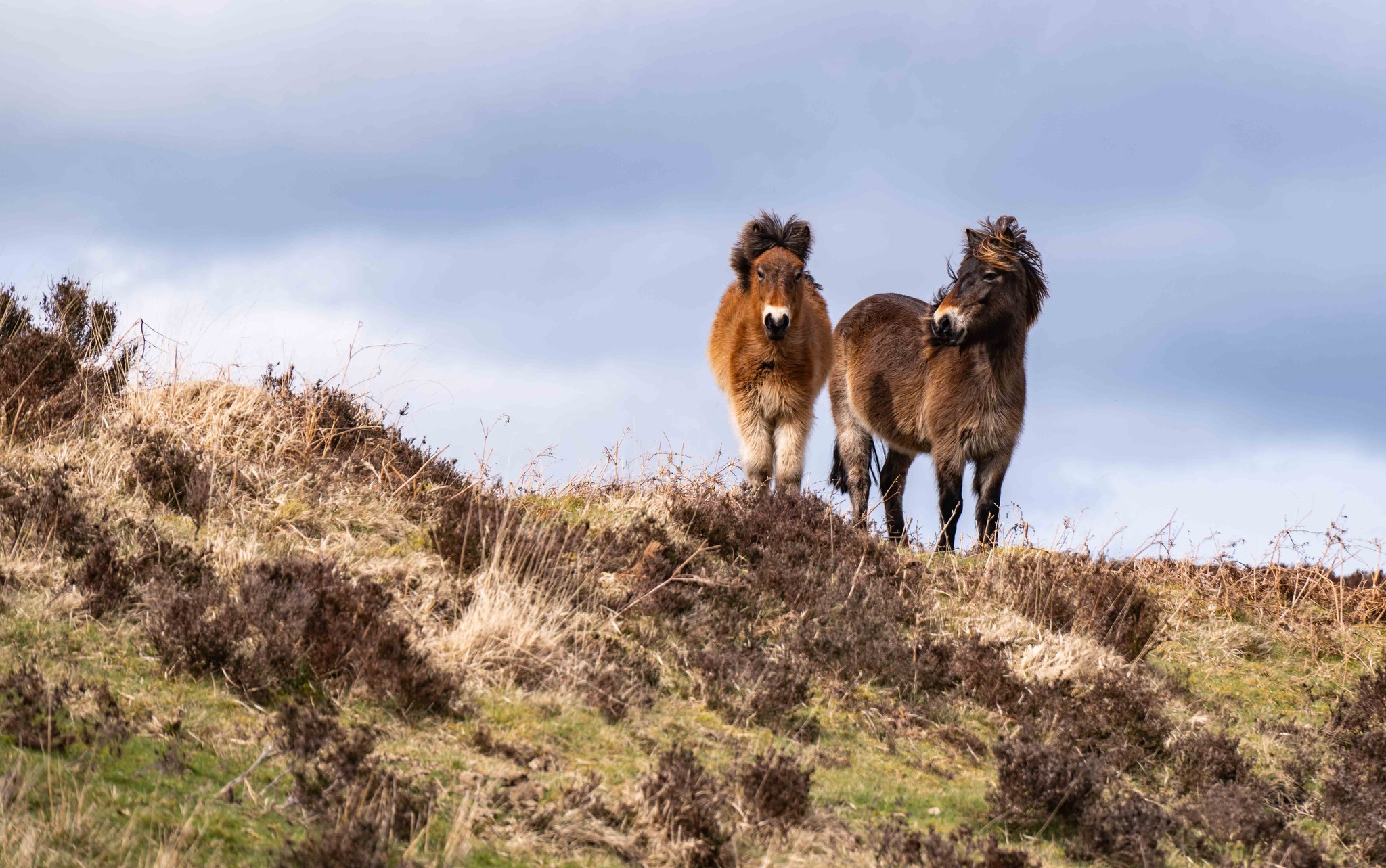Where Inspiration Comes Alive: Walking in the Footsteps of Exmoor’s Great Minds
From Samuel Taylor Coleridge writing The Rime of the Ancient Mariner in Watchet, to Cecil Frances Alexander sketching the lines of All Things Bright and Beautiful while gazing at Dunkery Beacon, this landscape has always had a way of leaving its mark on the imagination.
Coleridge lived in the Quantock Hills on the edge of Exmoor and spent long days walking the wild coast and moorland. It was during one of these walks that he passed through Watchet and imagined his most famous poem. The harbour town still honours the moment with a striking statue of the Ancient Mariner, standing watch over the sea that inspired the tale.
Coleridge was often joined on these walks by his friend William Wordsworth, who found his own kind of peace and inspiration in the soft valleys and uplands of Exmoor. It was during this time that he composed early drafts of I Wandered Lonely as a Cloud—lines that speak of solitude, memory, and the quiet grandeur of nature. Though often associated with the Lake District, Wordsworth’s time on Exmoor helped shape the romantic spirit that runs through his work.
Not far from there, another poetic line took shape. Cecil Frances Alexander, visiting Exmoor in the 19th century, is believed to have written “the purple-headed mountain” while looking out from Dunkery Beacon, the highest point on Exmoor. In late summer, the slopes below turn rich with flowering heather—just as they did in her day.
But Exmoor doesn’t just belong to the past. With the Coleridge Way, Two Moors Way, and South West Coast Path weaving through its dramatic landscape, it still draws modern pilgrims in search of creativity, solace, and space to breathe.
Watch below as Ian McKellen brings The Rime of the Ancient Mariner to life, just a stone’s throw from where it began:
Trails That Tell Stories
The Coleridge Way is a 51-mile walking route that connects the Quantock Hills with the Exmoor coast. Starting at Nether Stowey, where Coleridge once lived, it leads you through ancient woodland, moorland ridges, and deep valleys before finishing in Lynmouth, where the sea meets the sky. If you’ve ever wanted to walk in the footsteps of a poet—literally—this is the path.
The more ambitious Two Moors Way links Exmoor and Dartmoor, taking you 117 miles across Devon from Lynmouth to Wembury. Coast to coast. Moor to moor. Along the way, you’ll cross high ridges, riverbanks, and tiny timeless villages—some so quiet, you’ll wonder if time has stopped altogether.
And then there’s the South West Coast Path, the stage for Raynor Winn’s acclaimed memoir The Salt Path. Her journey, spurred by loss and illness, took her along the very same cliff-tops, sea-stacks, and headlands you’ll find along Exmoor’s edge. The story has become a modern classic—and a film—bringing even more walkers to discover the healing power of the Exmoor coast.
Walking through Doone Valley also captures that same spirit of solitude and story—explore it on the Brendon Two Gates Doone Valley Circular Walk

Where the Sky Inspires, Too
Exmoor isn’t just a place to walk—it’s a place to look up. As one of the world’s first International Dark Sky Reserves, it’s a favourite with stargazers, artists, and romantics. Some of our Exmoor holiday cottages even come with telescopes or outdoor hot tubs designed for night-sky viewing.
Wander out past Porlock Weir, pause near the Valley of Rocks, or climb Dunkery Beacon, and you’ll see stars as our ancestors did—unfiltered, unspoiled, and breathtaking. Read about stargazing here, Take the Dark Skies Discovery Trail and learn at the Dark Skies Festival.
Books, Paintings, and More
Exmoor has long inspired stories, not just poems. R.D. Blackmore wrote Lorna Doone bringing the wild romance of Doone Valley to life, weaving history and legend into the landscape. Henry Williamson’s Tarka the Otter followed the quiet drama of riverbanks and woodland, deeply rooted in Exmoor’s natural rhythms.
Artists, too, found beauty here. Sir Alfred Munnings captured the energy of moorland ponies and hunts; Cecil Aldin painted village life with warmth and nostalgia. Even Arthur C. Clarke, born in Minehead, may have first looked to Exmoor’s night skies before imagining galaxies far beyond in A 2001: A Space Odyssey.
And some of Exmoor’s greatest tales are true. In 1899, the Louisa Lifeboat was hauled over 13 miles of steep hills to reach Porlock and save lives at sea. The Lynmouth Flood of 1952 saw devastating loss—but also immense courage and community spirit.
From fiction to fine art, real heroism to imagination, Exmoor continues to shape stories—and those who tell them.
No story captures the spirit of Exmoor more than R.D. Blackmore’s novel — and you can trace its setting on the Lorna Doone Circular Walk.

Plan Your Own Creative Escape
Exmoor remains one of the UK’s quietest national parks—and that’s its secret superpower. There’s space to think, time to breathe, and views to stir your soul. Whether you come with hiking boots, a notebook, a paintbrush—or just a bit of curiosity—you’ll leave with something deeper than memories.
Looking for a place to stay? Try:
A cosy Minehead cottage near the beach and moorland trails
A peaceful Dunster beneath the castle towers
A quiet Porlock retreat with sea views
Accommodation in Dulverton, Exford, Winsford, Lynton, or Lynmouth
Explore from North Devon – Combe Martin to South Molton, or relax after a beach day in Woolacombe
FAQ
The Coleridge Way is a 51-mile walking trail from the Quantock Hills to Lynmouth on Exmoor, inspired by poet Samuel Taylor Coleridge.
Yes. William Wordsworth walked across Exmoor with Coleridge, shaping early drafts of his famous poem I Wandered Lonely as a Cloud.
Cecil Frances Alexander wrote the line “purple-headed mountain” while visiting Dunkery Beacon, the highest point on Exmoor.
Yes. Watchet harbour has a striking statue of the Ancient Mariner, marking Coleridge’s inspiration for his famous poem.
Raynor Winn’s bestseller The Salt Path follows the South West Coast Path, which runs along Exmoor’s dramatic coast.

